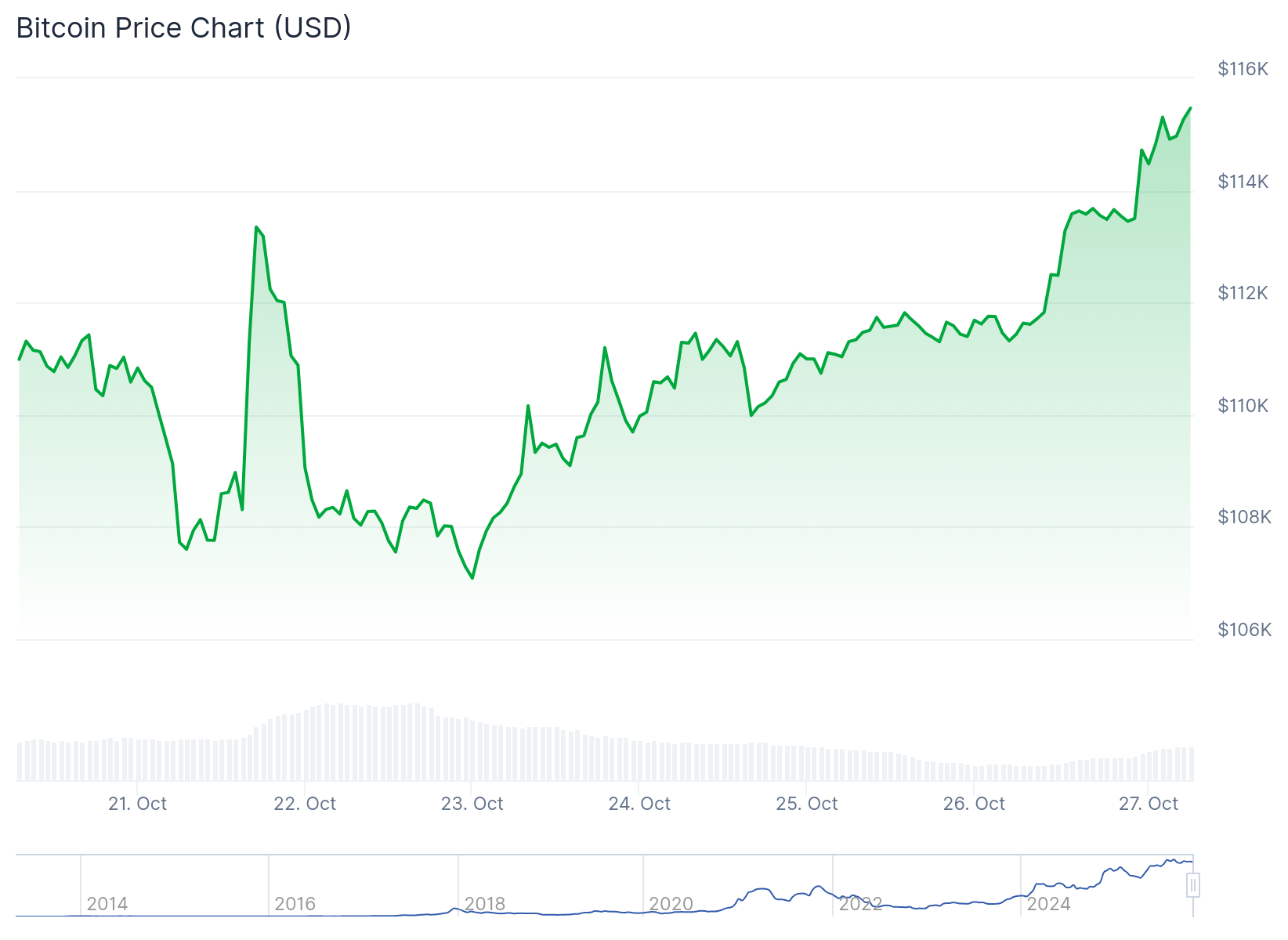US-China Trade Deal Sends Crypto Market Soaring After Tariff Threat Removed
TLDR
- US Treasury Secretary Scott Bessent announced a “substantial” trade framework with China after negotiations in Malaysia on October 26, 2025
- The deal is expected to prevent the 100% additional tariffs that President Trump threatened to impose on November 1
- Bitcoin rose above $115,000, Ethereum gained 3.6% to over $4,200, and Solana increased 3.7% following the announcement
- Both countries reached “basic consensuses” on six trade areas including tariffs, fentanyl cooperation, agricultural products, and export controls
- The framework shifts away from earlier hardline rhetoric when Bessent mentioned potential tariffs “up to 500%” on China
US Treasury Secretary Scott Bessent announced on Sunday that the United States and China have reached a “substantial” trade framework following two days of negotiations in Malaysia. The deal could prevent President Donald Trump’s threatened 100% tariffs scheduled for November 1.
Bessent said President Trump’s tariff threats gave negotiators leverage during the talks. The Treasury Secretary stated the framework will allow both countries to discuss additional trade matters beyond the immediate tariff concerns.
The negotiations took place in Kuala Lumpur with Chinese Vice Premier He Lifeng. Both delegations worked through multiple areas of trade disputes that have created tension between the world’s two largest economies.
The trade talks represent a shift from recent aggressive rhetoric. Earlier this month, Bessent mentioned that a supermajority in the US Senate was prepared to grant Trump authority to impose tariffs up to 500% on China related to Russian oil purchases.
Crypto Markets Respond to Trade News
Bitcoin climbed to around $115,000 after the announcement, representing a 1.8% increase. Ethereum rose 3.6% to push above $4,200 while Solana gained 3.7%.
 Bitcoin (BTC) Price
Bitcoin (BTC) Price
The global crypto market cap increased approximately 1.9% to roughly $3.92 trillion. Bitcoin dominance remained near 57.7% with Ethereum holding about 12.5% of the market.
Crypto markets have shown sensitivity to trade war developments throughout 2025. President Trump’s October 11 social media post announcing 100% tariffs triggered a crypto market decline that saw some tokens lose up to 99% of their value in 24 hours.
Jeff Park, an advisor at Bitwise, predicted the positive trade news would send Bitcoin and gold to new all-time highs. Investor and analyst Anthony Pompliano said asset prices could surge this week if the trade deal is announced and the Federal Reserve cuts interest rates.
Six Areas of Trade Agreement
Both countries reached “basic consensuses” on six specific trade concerns during the Malaysia talks. These include US Section 301 measures on China’s maritime, logistics and shipbuilding sectors.
The framework covers extension of the suspension of reciprocal tariffs. Fentanyl-related tariff and law-enforcement cooperation forms another part of the agreement.
Trade in agricultural products will be expanded under the new framework. Export controls were also addressed during the negotiations.
Bessent mentioned potential progress on Chinese purchases of US agriculture products. The Treasury Secretary also flagged possible coordination on fentanyl-related law enforcement between the two countries.
The framework is expected to secure a deferral of China’s rare-earth export curbs. President Trump and Chinese President Xi Jinping are scheduled to meet at the Asia-Pacific Economic Cooperation summit on October 31.
The post US-China Trade Deal Sends Crypto Market Soaring After Tariff Threat Removed appeared first on CoinCentral.
You May Also Like

Ripple Clash: Scott Melker Questions XRP’s True Purpose

The End of Fragmentation: Towards a Coherent Ethereum
